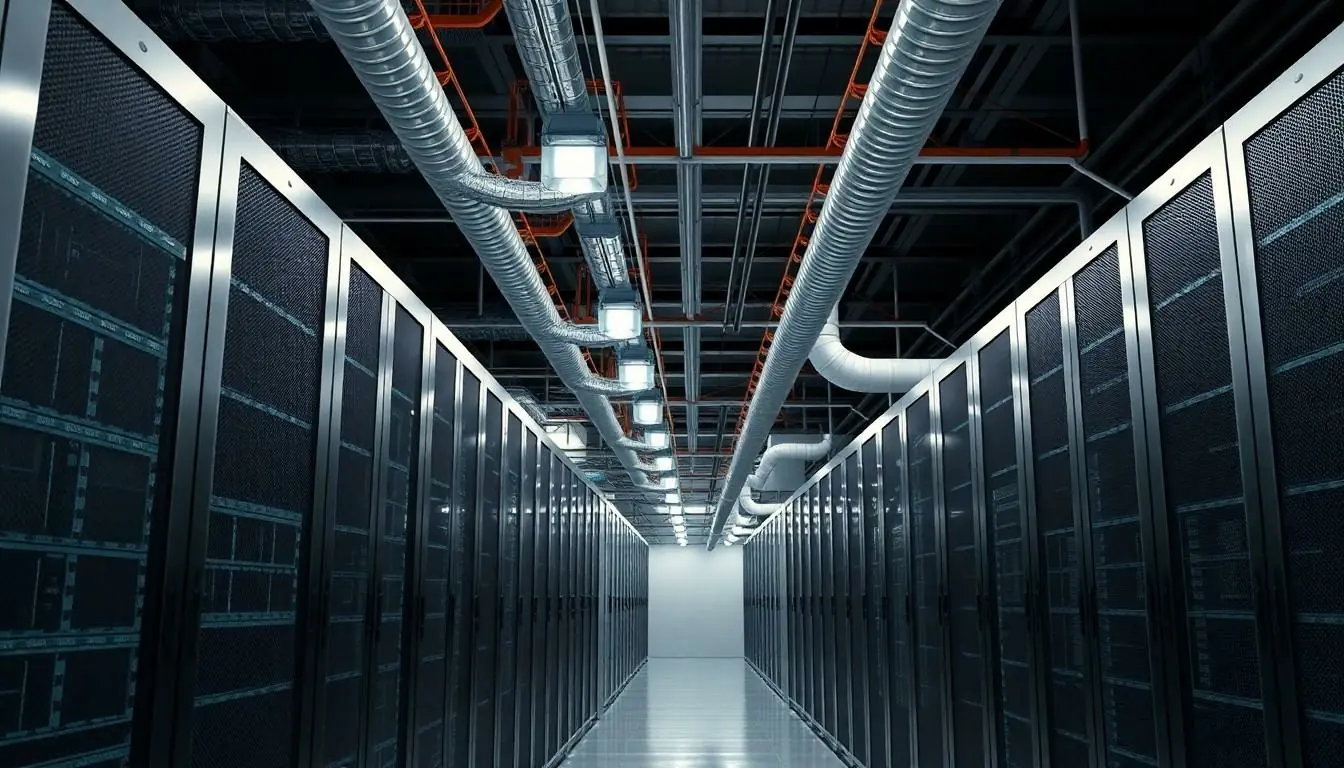Table of Contents
ToggleIn a world where every click and keystroke seems to come with an environmental price tag, have you ever wondered just how much water it takes to chat with ChatGPT? While it might not quench your thirst, the water footprint of using AI technology is surprisingly fascinating. It turns out, behind those witty responses and insightful answers lies a complex web of servers and data centers that guzzle water like a marathon runner at a finish line.
Understanding Water Usage in Technology
Technology consumes considerable water while processing data and operating servers. AI systems, like ChatGPT, rely heavily on data centers that house thousands of servers. Each server requires cooling and maintenance, leading to significant water use.
Data centers can use up to 1.5 million gallons of water annually. This water facilitates cooling mechanisms that keep servers from overheating. Cooling systems operate at peak efficiency only when sufficient water is available, which directly ties water consumption to performance levels.
Industries show a wide variation in water usage depending on the efficiency of cooling technologies. Some data centers implement innovative solutions that reduce water dependence and utilize air-cooling technologies. However, many still rely primarily on water-intensive methods.
The water footprint doesn’t stop at cooling. Electricity generation for data centers demands vast amounts of water, especially in thermoelectric plants. These interdependent systems highlight the complex relationship between water, energy, and technological operations.
AI’s rapid growth intensifies pressure on water resources. As more users engage with applications like ChatGPT, increasing server activity results in higher water consumption. Sustainable practices must advance to mitigate expanding water demands linked to technological dependence.
The Data Center Impact

The water footprint of data centers significantly contributes to the environmental impact of AI technologies like ChatGPT. Understanding the relationship between energy consumption and water use reveals the broader implications of AI operations.
Energy Consumption and Water Use
Electricity generation for data centers requires substantial amounts of water. Thermoelectric plants account for a significant share of this demand. Data centers that consume vast amounts of energy can lead to higher water usage, with estimates reaching 1.5 million gallons annually for cooling. Each server’s operation directly correlates to both energy and water consumption. Using efficient energy sources can reduce overall water needs, but many data centers still rely on less sustainable practices.
Cooling Systems and Water Requirements
Cooling mechanisms are essential for preventing server overheating, which can lead to operational failures. Traditional cooling systems often consume significant water resources for maintaining optimal temperatures. Some data centers adopt innovative cooling technologies that reduce water dependency. Despite advancements, many facilities still depend on conventional methods. Emphasizing a shift toward sustainable cooling options can help mitigate water use while ensuring efficient server performance.
User Interaction and Water Footprint
User interactions with ChatGPT result in a significant water footprint due to the infrastructure supporting its operation. Data centers that host AI models like ChatGPT require extensive cooling to prevent overheating. Each query contributes to the processing load on these centers, which can use around 1.5 million gallons of water annually for cooling.
Lifecycle of a ChatGPT Query
A query submitted to ChatGPT initiates a complex series of events. Firstly, the request travels through multiple servers, each consuming power and water for cooling systems. Next, the AI processes the input, which relies heavily on high-performance computing resources. After generating a response, the data leaves the servers, completing the cycle. Every step in this process involves energy-intensive operations, resulting in increased water use throughout the entire lifecycle.
Comparative Analysis with Other Technologies
Comparing ChatGPT’s water usage with other technologies reveals its broader environmental impact. Traditional technologies often utilize similar data processing methods, requiring extensive cooling and power, which drives water consumption. However, some innovations promote reduced water usage through advanced cooling solutions. Though these methods are gaining traction, many data centers still rely on conventional practices linked to high water demands. This highlights the importance of exploring more efficient technologies to minimize water footprints across the tech landscape.
Sustainability Efforts in AI Development
Efforts to reduce the water footprint of AI technology are crucial in today’s environment. Innovations in cooling technologies present a key area for advancement.
Innovations in Water Conservation
Many data centers are exploring innovative cooling methods to reduce water consumption. These new strategies include liquid cooling systems and evaporative cooling techniques, which minimize reliance on traditional methods. Some facilities have reported a reduction in water usage by as much as 50% through these advancements. Furthermore, research into utilizing reclaimed water for cooling purposes shows promise. Implementing these modern techniques not only addresses water sustainability but also enhances energy efficiency.
Corporate Responsibility and Transparency
Corporate responsibility plays a vital role in addressing water usage within AI operations. Companies increasingly highlight data center sustainability efforts in annual reports. By setting clear water usage benchmarks, organizations encourage transparency in their practices. Public commitments to sustainable initiatives attract environmentally conscious consumers and investors. Additionally, partnerships with environmental organizations can foster more responsible resource management. Articulating these efforts publicly builds trust and accountability in the tech industry.
The water footprint of using ChatGPT highlights a crucial aspect of AI technology that often goes unnoticed. As reliance on these systems grows the environmental implications become more pressing. Understanding the significant water usage associated with data centers is essential for fostering sustainable practices in the tech industry.
Innovations in cooling technologies and corporate responsibility play vital roles in mitigating water consumption. By embracing more efficient solutions and promoting transparency companies can not only reduce their water impact but also appeal to a growing base of environmentally conscious users.
As the demand for AI continues to rise it’s imperative to prioritize sustainability to ensure a balance between technological advancement and environmental stewardship.








